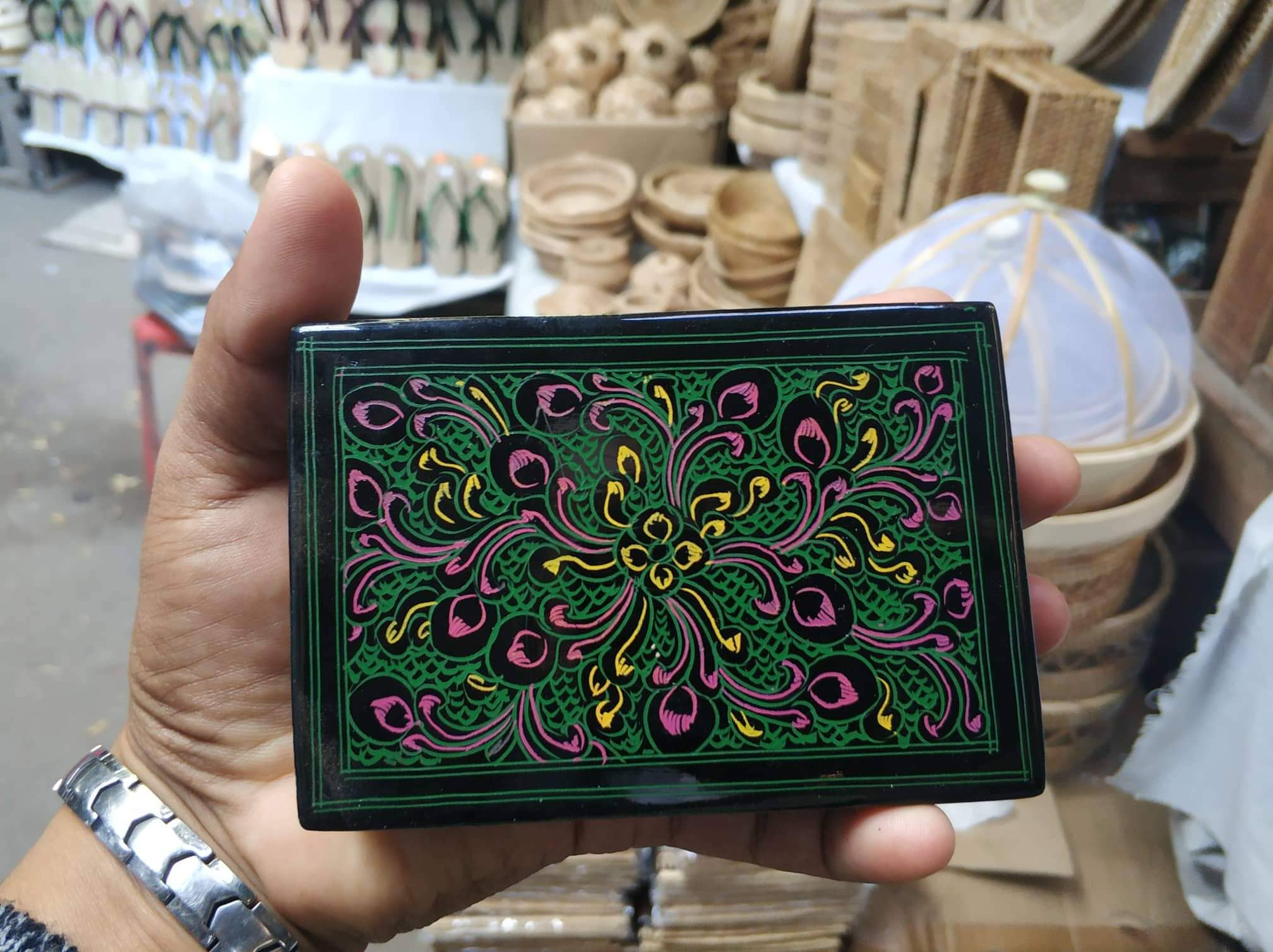Pan Yun- one in Ten kinds of Myanmar Traditional Arts
In Myanmar Traditional Arts, we can basically divide the arts into 10 kinds which are figuratively called “Ten Flowers”. They are the following and the Burmese word ‘Pan’ means as ‘flower’ in English.
- Pan Be (The art of blacksmith)
- Pan Yan (The art of Bricklaying and masonry)
- Pan Pu (The art of sculpture)
- Pan Tein (The art of gold and silver smith)
- Pan Chi (The art of Painting)
- Pan Put (The art of turning designs on the lathe)
- Pan Yun (The art of making lacquerware)
- Pan Tee (The art of bronze casting)
- Pan Tot (The art of making a floral design using masonry)
- Pan Tamot (The art of sculpting with stone)
Although you can also find some other kinds of arts besides these 10, the “Ten Flowers” are the majors and the most subtle and difficult art among all. We can say that the architecture of Pan Pu, Pan Be, Pantot and Pantamot has flourished since Pyu Kingdoms according to the antique objects excavated from Sri Ksetra ancient city of Pyu. However, it seems that only when it comes to Bagan Kingdom ( 849-1287), Mon, Pyu and Indian artists join together and made creation which leads to forming the art of ‘Ten Flower’.
History and Process of Pan Yun

These 10 kinds of arts are really interesting and meticulous and you will find very attractive to you. Around the country, you can see these remarkable arts and some people in the country make their living with these arts. One of them, Pan Yun, is also special and very famous. As mentioned above, Pan Yun is the art of making lacquerware. And, it is making materials using bamboo, wood, and thick black paint. And the origin of the art is from China and then spread into Southeast Asia, going back to thousands of years. For the process of woven, firstly, lacquer craftsman has to cut bamboo into stripes and carefully mix the resin with clay and ash. And then, they have to form the bamboo stripes into the desired shape and it is covered with the mixture. Finally, it will be polished with the ash of fossil wood and cross the etching or painting process by hand. The drawing style and design usually based on the stories of Buddha’s life. Nowadays, many modern designs are beautifully decorated. Although the lacquer wares artists create various shapes (tableware, furniture, boxes, containers, etc), most famous ones are all bowls, teacups, betel box, and cigar boxes. These lacquer wares are not only for decoration but also for long-lived existence.
Home for lacquerwares
Although Kyaukkar village near Monywa and Ava of Central Myanmar also produce lacquerware, Bagan lacquerwares are especially famous. Lacquerwares are the signs of Bagan and Bagan is the home for lacquerwares. Even Lacquerware Technology College is opened in Bagan and teaching this precious art to a new generation. So, if you visit Bagan, do not forget to explore the lacquerwares and the Bagan Cultural Day Tour we offered is excellent to see the art of making lacquerwares and brilliant lacquerwares.
